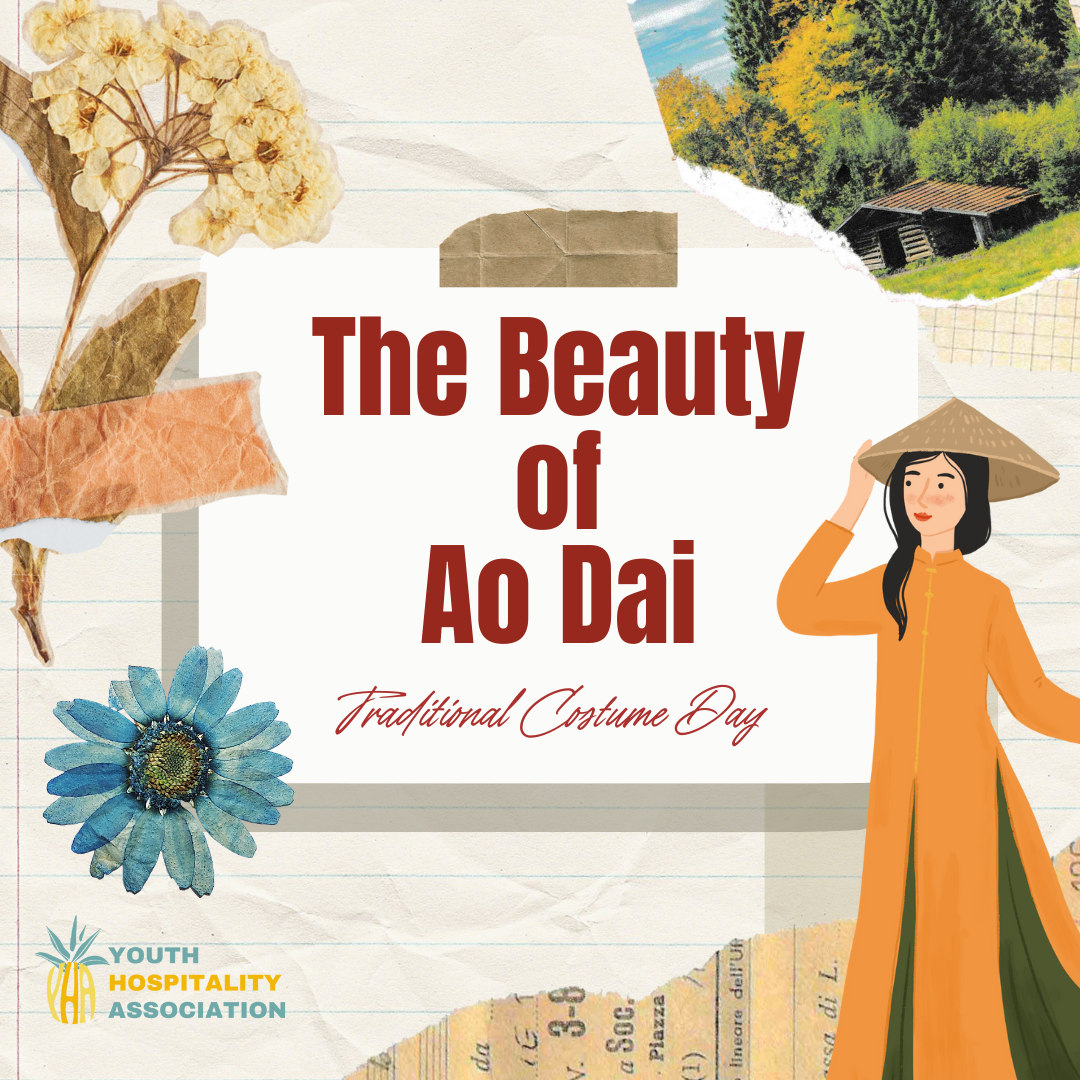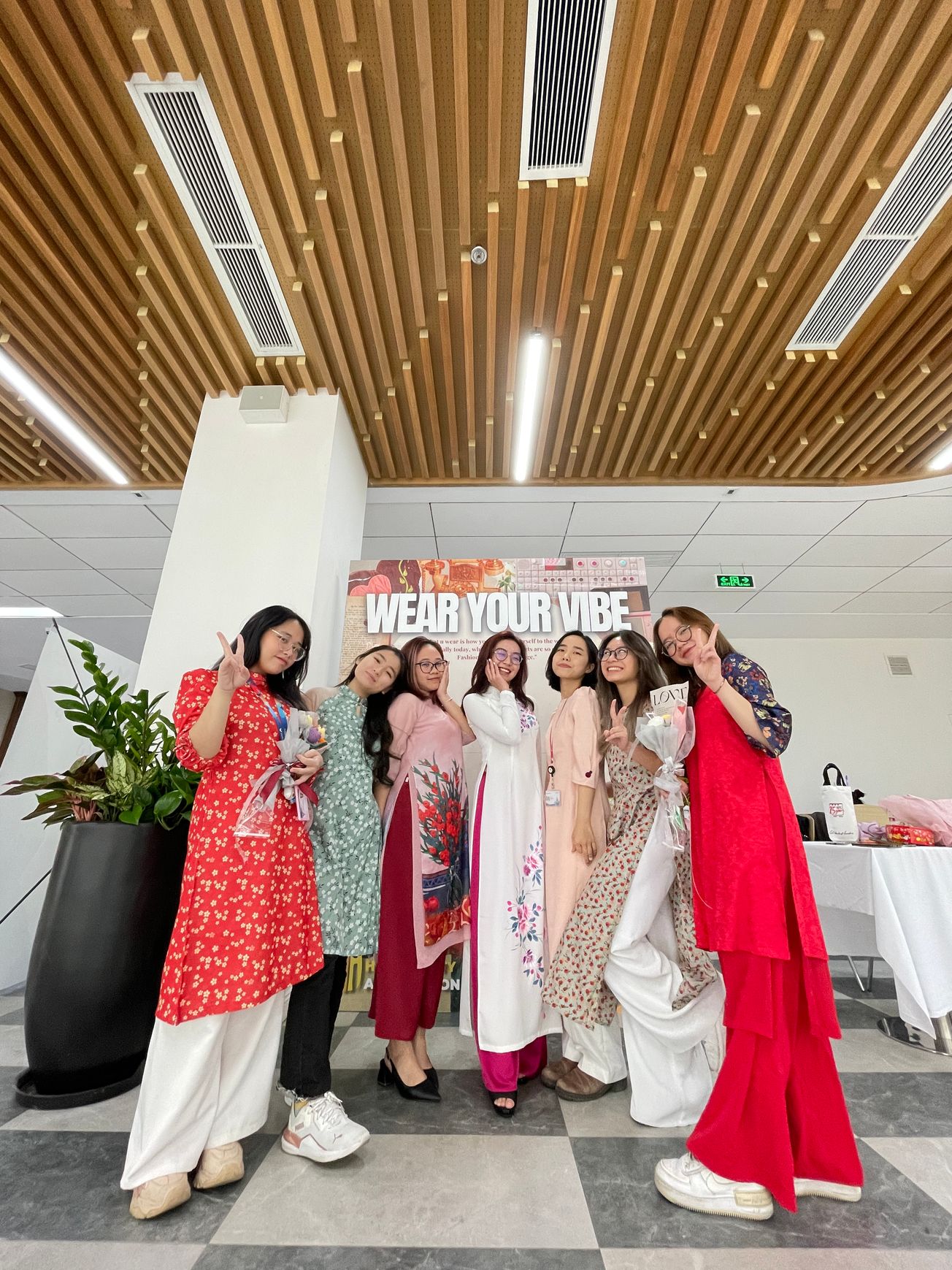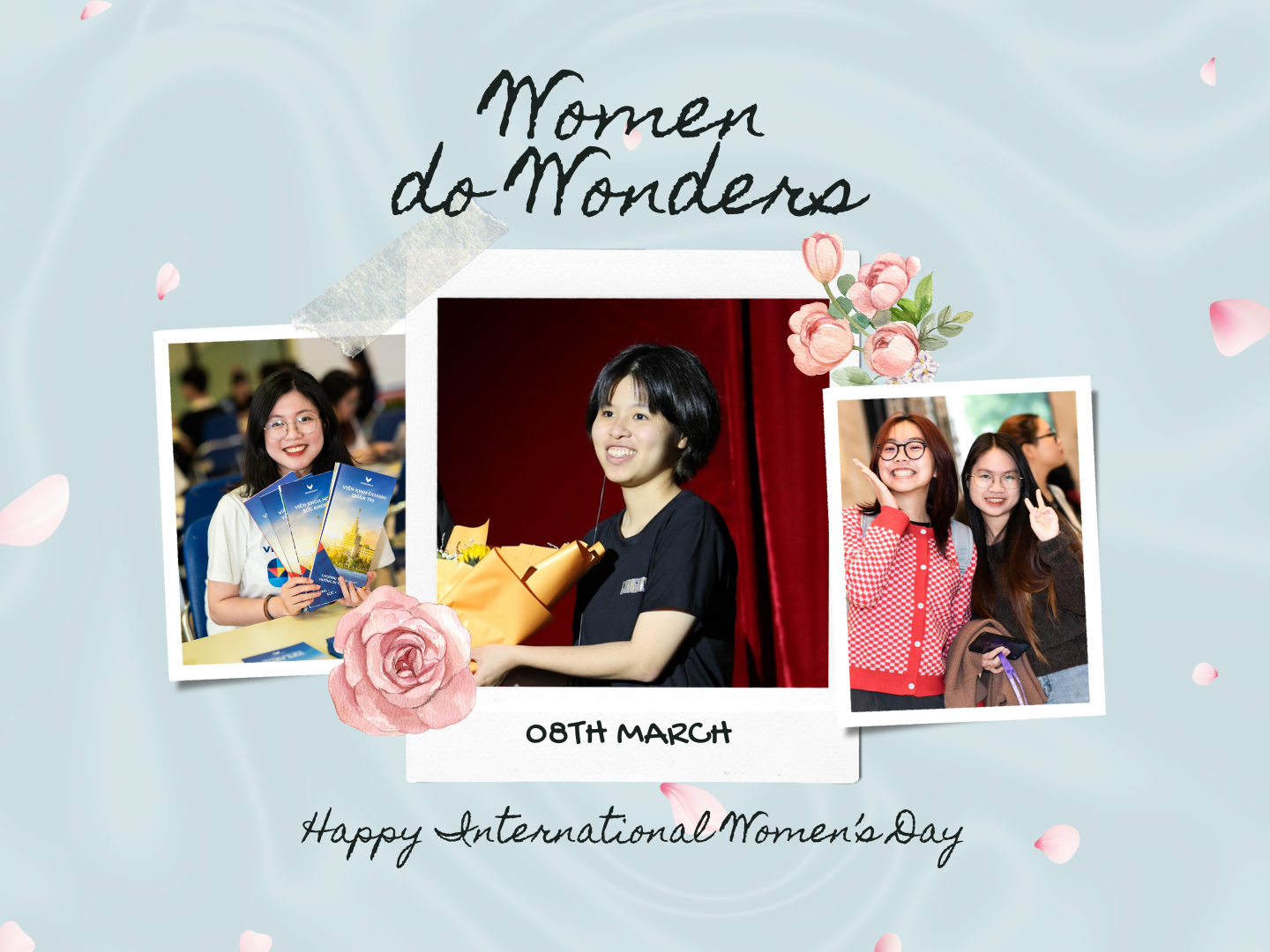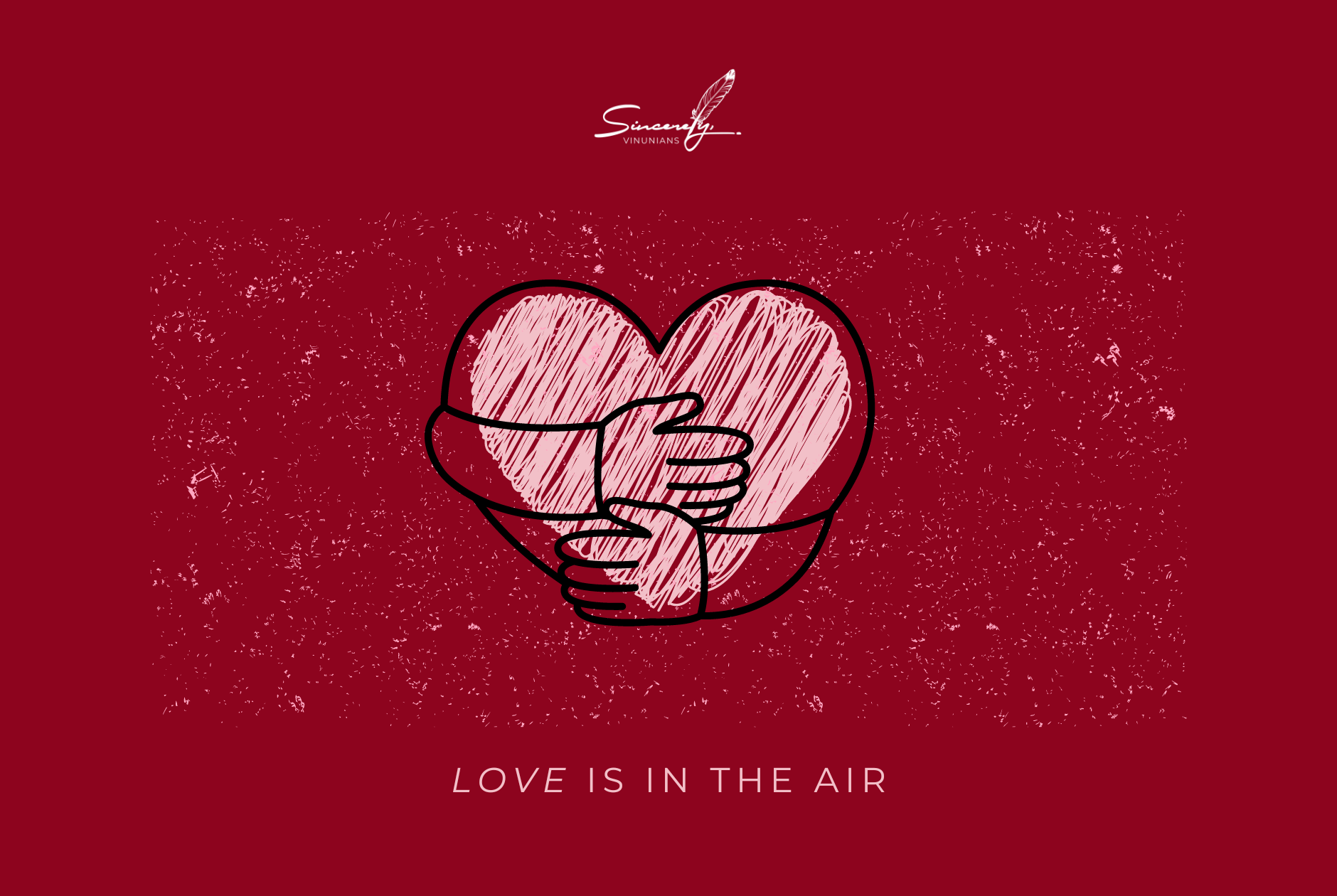Recently, our club Youth Hospitality Association has launched an event to celebrate International Women's Day: WEAR YOUR VIBES.
This event, at some point, reminds me of a story of my best friend, who has lived in a foreign country for two years. Not long ago, I sent her an Ao Dai (the Vietnamese traditional costume) for the Tet holiday, and she responded to me with a handwritten letter that expressed her home sick feelings. As a daughter who grew up far from his homeland Vietnam, Ao Dai holds a special place in her heart.

From our viewpoint, the Ao Dai is not just a piece of clothing, but a symbol of the rich cultural heritage and artistic expression that has defined Vietnam for centuries. It is a testament to the enduring spirit and identity of the Vietnamese people and a reminder of the importance of preserving and celebrating our cultural traditions.
This elegant traditional garment has been an iconic symbol of Vietnamese culture for centuries, and its history and development tell a story of the country's rich heritage and artistic expression. The Ao Dai, also known as the "long dress," consists of a tight-fitting tunic with a high collar and long sleeves, worn over long pants. The garment is usually made of lightweight silk or cotton and is adorned with intricate patterns and designs that reflect the wearer's social status and personal style.

The history of the Ao Dai can be traced back to the 18th century when Vietnamese women began to adopt tunic-style garments as a way to conform to Confucian ideals of modesty and femininity. However, it wasn't until the early 20th century that the Ao Dai became a national symbol of Vietnamese identity and patriotism. During this time, Vietnam was under French colonial rule, and many Vietnamese intellectuals and artists were searching for ways to express their cultural identity and resistance to French influence. The Ao Dai became a powerful symbol of this movement, with its traditional design and elegant simplicity embodying the spirit of Vietnamese nationalism.
Over the years, the Ao Dai has undergone various transformations and adaptations, reflecting the changing social and cultural landscape of Vietnam. During the 1950s and 60s, the Ao Dai was influenced by Western fashion trends, with shorter hemlines and more form-fitting designs becoming popular. However, in the 1970s, following the reunification of North and South Vietnam, there was a renewed interest in traditional Vietnamese culture, and the Ao Dai once again became a symbol of national pride and identity. Today, the Ao Dai remains an integral part of Vietnamese culture, worn by men and women alike for special occasions and formal events.
My friend and I share a similar perspective that we believe the Ao Dai is more than just a garment, it is a symbol of Vietnamese culture and identity. Its history and development reflect the country's rich heritage and artistic expression, while its enduring popularity and adaptability demonstrate the resilience and creativity of the Vietnamese.
Comments
Sign in or become a Sincerely, VinUnians member to join the conversation.
Just enter your email below to get a log in link.









